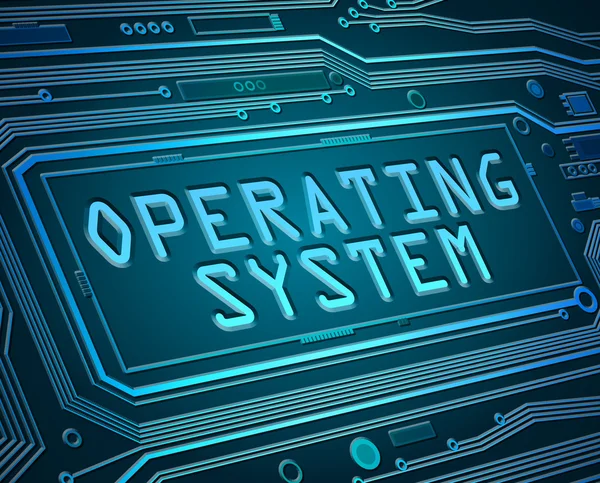
Introduction
The operating system (OS) is the foundational software that enables communication and coordination between the computer hardware and the user or other software applications. It acts as a bridge, managing various aspects of a computer’s resources and providing a user-friendly interface. In this article, we’ll explore the functions, components, and types of operating systems, as well as their significance in modern computing.
Functions of an Operating System
1. Hardware Abstraction
The OS abstracts the underlying hardware, providing a standardized interface for software applications. This abstraction shields applications from the complexities of various hardware components, allowing them to run on different machines with different configurations.
2. Process Management
The OS manages processes, which are instances of executing programs. It allocates resources, schedules processes for execution, and provides mechanisms for inter-process communication.
3. Memory Management
This function involves managing the computer’s memory, ensuring that each process has sufficient memory to execute without interfering with others. It handles tasks such as memory allocation, deallocation, and swapping data between RAM and disk storage.
4. File System Management
The OS organizes and manages files on storage devices. It controls access to files, maintains their integrity, and provides mechanisms for creating, reading, writing, and deleting files.
5. Device Management
This function involves managing input and output devices such as keyboards, mice, printers, and disk drives. The OS provides a layer of abstraction to allow applications to interact with these devices without needing to understand their specific hardware details.
6. User Interface
The user interface is the means through which users interact with the computer. It can be a command-line interface (CLI) or a graphical user interface (GUI), or a combination of both. The OS provides the necessary software components for these interfaces.
Components of an Operating System
1. Kernel
The kernel is the core component of an operating system. It resides in memory and is responsible for essential tasks like process management, memory management, and device management. It serves as a bridge between software applications and the computer’s hardware.
2. Device Drivers
Device drivers are specialized programs that enable the OS to communicate with hardware devices. They provide a standardized interface for the OS to interact with various types of hardware.
3. User Interface
The user interface provides a way for users to interact with the computer. This can be a command-line interface (CLI) or a graphical user interface (GUI). The UI is crucial for making computing accessible to a wide range of users.
4. Utilities
Utilities are additional software programs that assist in the management and maintenance of the system. They can perform tasks like disk cleanup, antivirus scanning, and system diagnostics.
Types of Operating Systems
1. Single-User, Single-Tasking OS
This type of OS allows only one user to run one program at a time. Early operating systems like MS-DOS fall into this category.
2. Single-User, Multi-Tasking OS
These OSs permit a single user to run multiple programs concurrently. Modern desktop operating systems like Windows, macOS, and various Linux distributions fall into this category.
3. Multi-User OS
Multi-user OSs support multiple users accessing the system simultaneously, each with their own user accounts and privileges. They are often used in enterprise environments and server systems.
4. Real-Time OS
Real-time operating systems are designed for applications where responsiveness and accuracy are critical. They are used in areas like industrial automation, aerospace, and medical devices.
5. Embedded OS
Embedded operating systems are tailored for specific devices or applications and are typically found in devices like smartphones, IoT devices, and consumer electronics.
Conclusion
Operating systems form the backbone of modern computing, providing the necessary abstractions and management functions to make complex hardware accessible to users and applications. From managing processes to providing user interfaces, the OS plays a pivotal role in the digital world. Understanding its functions and types is crucial for anyone interested in the field of computer science and technology.
FAQs
Q: What is the primary function of an operating system?
Ans: The primary function of an operating system is to act as a bridge between the computer’s hardware and software applications. It manages resources, provides a standardized interface, and handles tasks like process management, memory management, and device management.
Q: What are the key components of an operating system?
Ans: The key components of an operating system include the kernel (core component responsible for essential tasks), device drivers (specialized programs for hardware communication), user interface (providing interaction for users), and utilities (additional software for system management and maintenance).
Q: What are the different types of operating systems and their use cases?
Ans: Operating systems come in various types, including single-user, single-tasking OS (e.g., MS-DOS), single-user, multi-tasking OS (e.g., Windows, macOS, Linux), multi-user OS (used in enterprise and server environments), real-time OS (critical for applications like industrial automation), and embedded OS (tailored for specific devices like smartphones and IoT devices).
Q: How does an operating system manage memory and processes?
Ans: The operating system manages memory by allocating and deallocating memory space for processes, ensuring they have sufficient resources to execute. It also handles swapping data between RAM and disk storage. Process management involves scheduling processes for execution, allocating resources, and providing mechanisms for inter-process communication.
Q: Why is understanding operating systems important in the field of computer science?
Ans: Understanding operating systems is crucial in computer science as they form the foundation of computing. It provides insights into how software interacts with hardware, making it essential for software development, system administration, and troubleshooting. Additionally, it allows for a deeper understanding of computer architecture and system optimization.
Thanks for reading!!!
